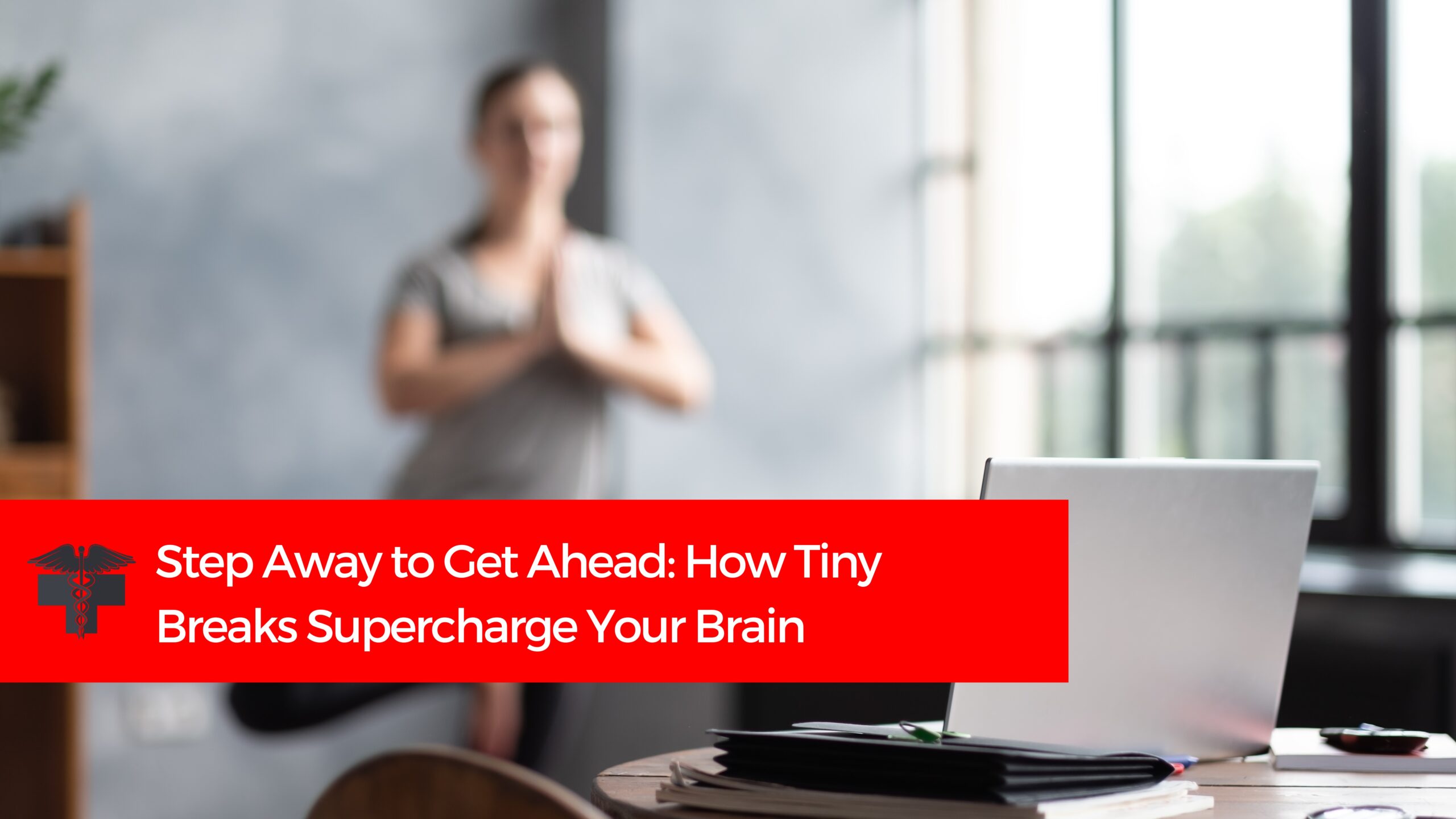We live in a world that glorifies “always on” but your brain wasn’t designed for constant go-mode. It’s built to pulse between periods of intense focus and intentional recovery. When you skip those small rest windows, your attention fades, stress builds, and your creativity tanks.
The good news? The solution isn’t working harder. It’s pausing smarter.
Why Breaks Matter
Your brain’s energy isn’t infinite. In fact, cognitive performance starts to dip after 60–90 minutes of focused work. Research from University of Illinois at Urbana–Champaign found that short, regular breaks can sustain attention and productivity far longer than powering through fatigue.
Here’s what’s happening beneath the surface:
- Your prefrontal cortex (the part responsible for decision-making and problem-solving) needs recovery time to stay sharp.
- Breaks help lower cortisol, your stress hormone, while engaging your parasympathetic nervous system — the “rest and digest” mode.
- Even 90 seconds away from your screen gives your brain a “neural breath” that helps you reset and refocus.
How to Take a Micro-Break That Works
Not all breaks are created equal. The most powerful ones actively help your brain recover instead of flooding it with more stimulation (hello, endless scrolling).
5 Best Ways to Take a Micro-Break
- 90-Second Screen Break
Simply look away from all screens. Gaze out a window or at something calming. This gives your visual cortex and nervous system a quick reset. - 5-Minute Breathwork Reset
Try the 4-7-8 breathing technique or slow box breathing. Research from Harvard Medical School shows that controlled breathing lowers stress hormones and heart rate. - Mini Movement Burst
Stand up, walk to the end of the hallway, or do a few stretches. A study published in American Psychological Association journals found even 2 minutes of light activity boosts mood and focus. - Sensory Shift
Step outside, feel fresh air, notice a sound or smell. A change in sensory input helps your brain “unstick” from its current task loop. - Mindful Pause
Close your eyes. Inhale slowly, exhale longer. Notice one thing you’re grateful for. This calms your amygdala and helps bring your brain out of stress mode.
When to Take Breaks
Micro-breaks work best before your energy crashes.
Tip: Set a gentle reminder every hour to step away, breathe, and reset.
Many people love the “52–17 Rule” which is 52 minutes of focused work followed by 17 minutes of rest. But even 90 seconds can work wonders.
Where to Reset Your Mind
You don’t need a wellness retreat to recharge. You just need a moment.
- Step outside for fresh air.
- Walk down the hall.
- Sit near a sunny window.
- Stand and stretch by your desk.
- Find a quiet corner to breathe.
The key is changing your sensory environment, even briefly.
The Bottom Line
Burnout isn’t a badge of honor. It’s your brain waving a red flag. Science shows that tiny, intentional breaks protect your mental clarity, focus, and emotional health.
So today, set that reminder.
Step away. Breathe. Reset.
Little breaks add up to big clarity.





 and then
and then